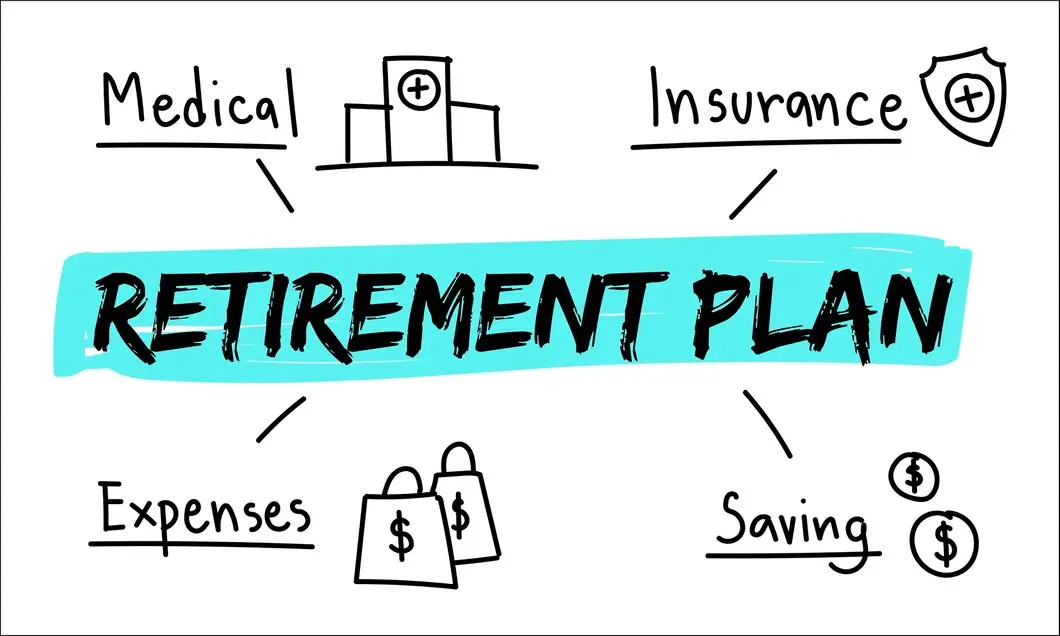Saving for retirement is often considered a distant goal when you’re in your 30s, a decade typically filled with career building, personal growth, and, for many, increased financial responsibilities. However, beginning a retirement plan in your 30s can set you up for a comfortable and secure future. The earlier you start, the easier it is to take advantage of compound interest, investment opportunities, and a diversified portfolio that can withstand market ups and downs. Here’s how to make retirement savings a priority, even while balancing other financial obligations.
1. Understand the Power of Starting Early
One of the biggest benefits of starting to save for retirement in your 30s is time. By investing early, you can leverage the power of compound interest, where your earnings generate even more earnings over time. Here’s why starting now is crucial:
- Compound Growth: The money you invest grows over time, and the interest you earn compounds. A small investment now can become significant after decades of growth.
- Reduced Financial Stress Later: Early planning allows you to gradually save more, reducing the stress of making large contributions in later years.
Starting even with a modest amount can make a huge difference. For example, if you invest $200 per month at an average return of 7%, you could have over $200,000 saved by retirement age.
2. Set Clear Retirement Goals
Setting goals helps make saving for retirement tangible and realistic. The amount you need for retirement varies based on your lifestyle, anticipated expenses, and life expectancy. Consider these factors when setting your goals:
- Desired Lifestyle: Do you envision a modest lifestyle, or are you planning for travel and luxury? Your retirement needs will depend on the kind of lifestyle you aim for.
- Expected Expenses: Factor in healthcare costs, possible mortgage or rent, utilities, and daily living expenses.
- Life Expectancy: With improved healthcare, it’s not uncommon to live well into your 80s or 90s, so plan accordingly.
Use a retirement calculator to estimate how much you’ll need and determine how much to save each month.
3. Maximize Your Employer’s 401(k) Match
If you work for a company that offers a 401(k) with a matching contribution, make the most of it. An employer match is essentially free money, helping you grow your retirement savings faster. Here’s how to take advantage of it:
- Contribute at Least the Matching Amount: For example, if your employer matches 50% of your contributions up to 6% of your salary, contribute at least that 6% to maximize the benefit.
- Start Small and Increase Over Time: If you’re not able to contribute the full match amount right away, begin with a smaller percentage and gradually increase it. Many 401(k) plans offer an automatic escalation feature that increases contributions by 1% each year.
An employer’s match can be a game-changer for your retirement savings, so aim to contribute enough to benefit fully from this valuable perk.
4. Open an Individual Retirement Account (IRA)
In addition to your 401(k), consider opening an Individual Retirement Account (IRA) to supplement your savings. IRAs offer tax advantages and flexibility, with two main types to consider:
- Traditional IRA: Contributions are often tax-deductible, but withdrawals in retirement are taxed. This can be beneficial if you anticipate being in a lower tax bracket during retirement.
- Roth IRA: Contributions are made with after-tax dollars, but withdrawals in retirement are tax-free. Roth IRAs are ideal if you expect to be in a higher tax bracket when you retire.
The annual contribution limit for IRAs is $6,500 (or $7,500 if you’re over 50). With a Roth IRA, you also have the flexibility of withdrawing contributions (not earnings) without penalties, which can be a useful option if an emergency arises.
5. Establish a Diverse Investment Portfolio
While retirement accounts provide a solid foundation, diversifying your investment portfolio is essential for long-term growth. Diversification reduces risk and offers potential for greater returns by spreading your investments across various assets. Here’s how to diversify effectively:
- Stocks: Equities generally offer the highest potential returns, though they come with higher risk. Young investors can afford to take more risk since they have time to recover from market downturns.
- Bonds: Bonds are lower-risk, fixed-income investments that add stability to your portfolio, especially as you get closer to retirement.
- Real Estate: Real estate investments can offer passive income and increase in value over time. Consider REITs (Real Estate Investment Trusts) if you prefer not to manage properties directly.
- Mutual Funds or ETFs: These funds pool money from many investors to purchase a mix of stocks, bonds, and other assets, providing automatic diversification.
6. Automate Your Savings
Automating your retirement savings helps you stay consistent and prevents the temptation to skip contributions. By setting up automatic transfers from your paycheck to your 401(k), IRA, or other retirement accounts, you make saving a priority without additional effort. Here’s how automation can benefit you:
- Consistency: Automated contributions ensure you’re investing regularly, taking advantage of dollar-cost averaging.
- Discipline: It reduces the temptation to spend the money elsewhere, keeping you on track toward your retirement goals.
If your income increases or you pay off debt, consider increasing your automated contributions for an even greater impact.
7. Build an Emergency Fund to Protect Your Savings
One of the biggest threats to your retirement savings is unexpected expenses, which can tempt you to dip into your retirement accounts prematurely. An emergency fund acts as a financial safety net, protecting your retirement savings for the long term. Aim to save 3-6 months’ worth of expenses in a high-yield savings account that is easily accessible.
An emergency fund ensures that you won’t need to tap into your retirement savings for unexpected events like medical expenses, car repairs, or job loss.
8. Avoid Lifestyle Inflation
In your 30s, as your income grows, it’s tempting to increase spending. However, this can undermine your long-term financial goals. By keeping lifestyle inflation in check, you can increase your retirement contributions instead of spending more. Here are some ways to avoid lifestyle inflation:
- Prioritize Financial Goals Over Luxury: It’s okay to reward yourself occasionally, but prioritize retirement contributions before upgrading your lifestyle.
- Increase Savings Rate with Income Growth: Whenever you get a raise, increase your retirement contributions by a percentage before adjusting your lifestyle.
- Create a Budget: A clear budget helps you stay mindful of your spending, allowing you to balance present and future financial priorities.
9. Minimize High-Interest Debt
High-interest debt, such as credit card debt, can erode your finances and hinder your ability to save for retirement. By paying down debt with high-interest rates, you free up more money for retirement contributions. Here’s how to manage it effectively:
- Prioritize High-Interest Debt: Pay off debt with the highest interest rate first, as it’s the most costly. Once high-interest debt is gone, you can focus more on retirement savings.
- Avoid Accumulating More Debt: Stick to a budget and avoid unnecessary expenses to prevent more high-interest debt from piling up.
Debt elimination reduces financial stress and gives you more freedom to grow your retirement funds.
10. Monitor and Adjust Your Retirement Plan Over Time
As life changes, so do your financial goals and needs. It’s essential to monitor your retirement savings and adjust your plan regularly to ensure you’re on track to meet your goals. Here are some tips for staying on top of your retirement plan:
- Review Your Portfolio Annually: Check your investments once a year to make sure your asset allocation aligns with your age and risk tolerance.
- Increase Contributions Gradually: Aim to increase your retirement contributions over time, especially as your income grows or debt decreases.
- Reevaluate Goals as Needed: Major life changes, such as marriage, children, or a career shift, may require you to adjust your retirement goals and contributions.
Regularly reviewing your retirement plan helps you adapt to life changes and stay committed to your financial future.
Final Thoughts: Start Saving for Retirement Today
Saving for retirement in your 30s can feel challenging with other financial commitments, but it’s one of the most important steps you can take for a secure future. By following these strategies, you can establish a solid retirement plan that grows with you, leveraging the power of time and compound interest to build a significant nest egg.
Remember, the best time to start saving was yesterday, and the second-best time is today. With discipline, consistent saving, and smart investing, you can create a bright financial future and enjoy a comfortable retirement. Start today, stay focused, and watch your future wealth grow.
FAQs: Retirement Saving Tips for Your 30s
Is 30 too late to start saving for retirement?
No, starting at 30 isn’t too late! You have plenty of time to benefit from compound growth, and consistent saving now can lead to a comfortable retirement.
Can you retire in your 30s?
Yes, but it’s challenging. Retiring in your 30s often requires saving aggressively, investing wisely, and keeping expenses low to sustain early retirement.
What is the 4% rule in retirement?
The 4% rule suggests withdrawing 4% of your retirement savings in the first year, then adjusting for inflation each year, to help your savings last about 30 years.
Is 37 too late to save for retirement?
No, 37 is still a great time to start! With regular contributions and smart investing, you can build a solid retirement fund, even starting in your late 30s.




